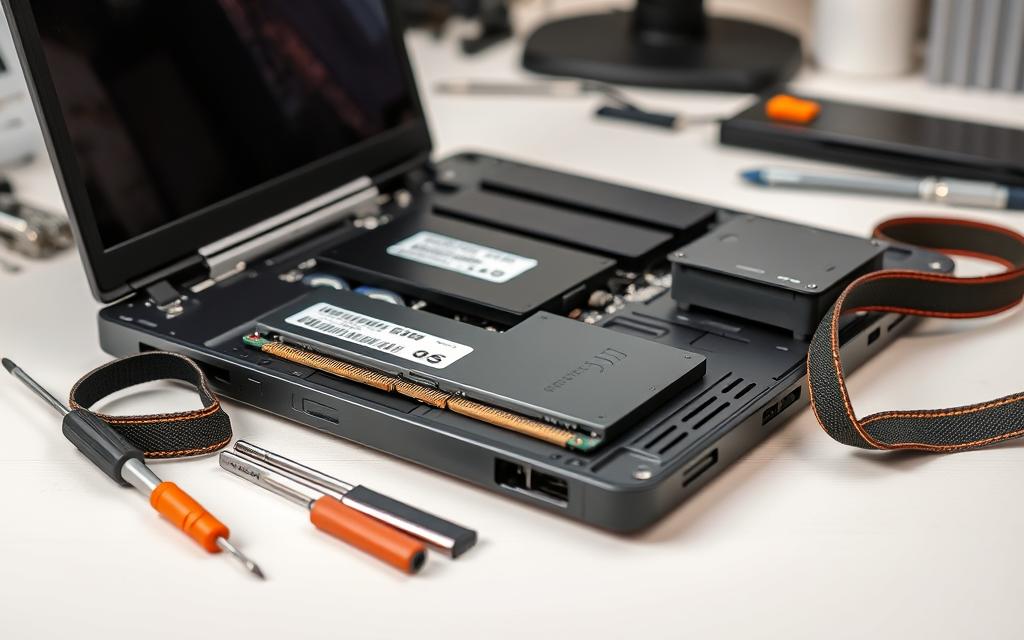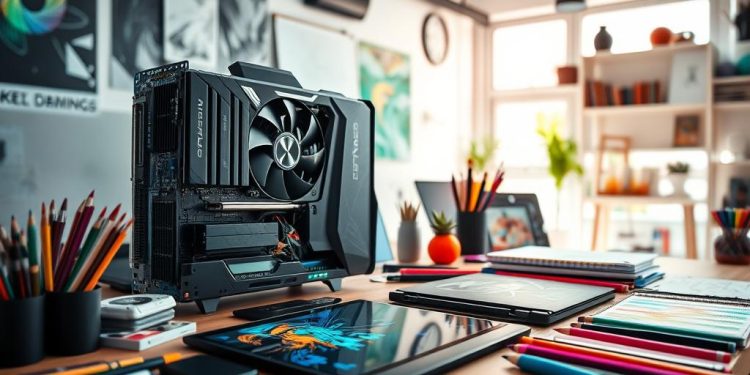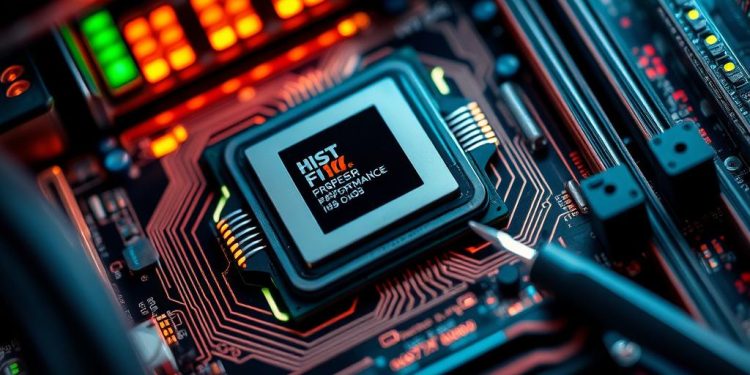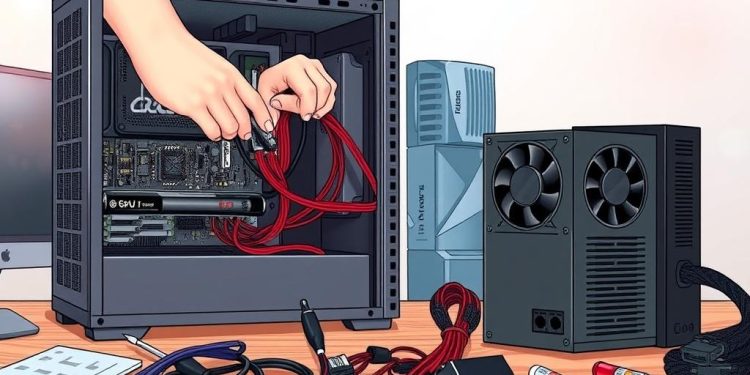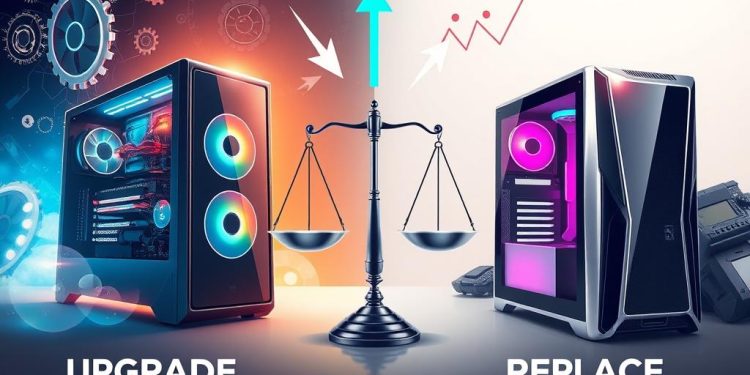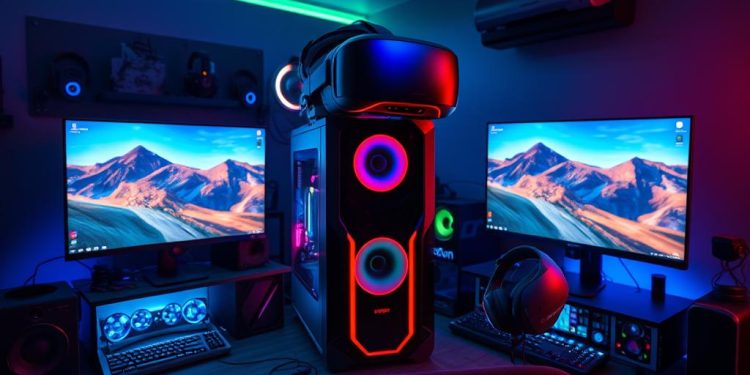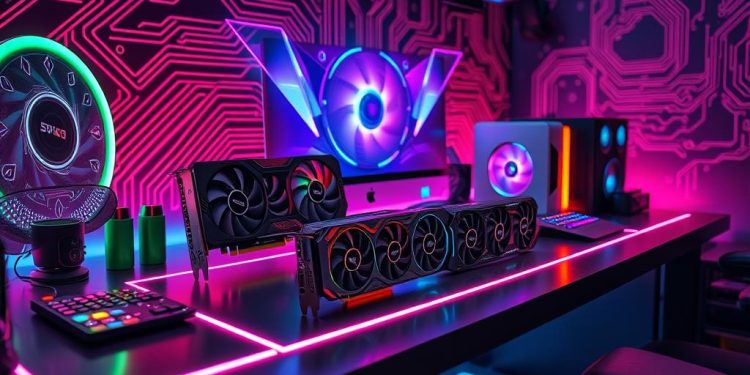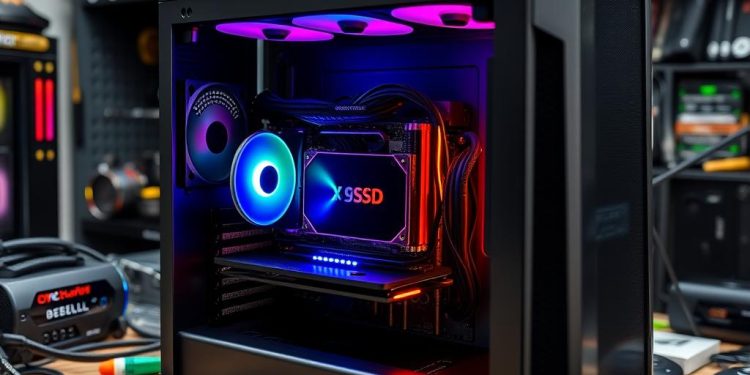Upgrading your laptop’s RAM and storage can be a game-changer, especially if you find your device running slowly or struggling during intensive tasks like gaming or data processing. Understanding how laptop upgrades work is crucial, as RAM replacement can significantly improve multitasking capabilities and overall performance. By implementing faster storage solutions, particularly Solid State Drives (SSDs), you can experience breathtakingly quick data access and system responsiveness.
This article serves as your comprehensive guide to enhancing your laptop’s memory and storage, ensuring you get the most out of your machine. From identifying what you need for a successful upgrade to the step-by-step installation process, we’ll explore how the right upgrades can breathe new life into older systems. With the proper knowledge, you can leverage the potential of upgraded RAM and SSD installation to propel your productivity forward.
Understanding the Importance of Laptop Upgrades
Upgrading your laptop significantly contributes to improved functionality and longevity. As technology advances, software demands increase, making the importance of laptop upgrades paramount for users aiming to keep pace. Insufficient RAM often results in sluggish performance and hampers multitasking capabilities. Reports indicate that Windows 10 and 11 users with less than 8GB of RAM frequently experience lags. By enhancing your RAM, you enable your laptop to manage resource-intensive applications more effectively, resulting in marked performance improvements.
Installing an SSD can transform your computing experience. The potential to reduce boot times by up to 70% compared to traditional hard drives allows you to start working faster. Application loading times can improve by a factor of ten, making everyday tasks notably smoother. With an upgraded storage capacity, you can accommodate about 50% more software applications and larger files, catering to professionals in fields such as gaming and multimedia. This aspect of computer efficiency ensures you can manage workloads without hiccups, leading to a substantial increase in productivity.
Statistically, many users report a productivity boost of around 30% after upgrading both storage and RAM. Such enhancements can even extend your laptop’s life by 1 to 3 years, delaying the costly need for a new device. It is clear that nearly 60% of tech-savvy users lean towards upgrading rather than purchasing new laptops, showcasing the cost-effectiveness of these improvements. By investing in upgrades with at least 16GB of RAM and a 512GB SSD, you set yourself up for a more efficient and satisfying computing experience.
| Upgrade Type | Recommended Capacity | Benefits |
|---|---|---|
| RAM | 8GB | Suitable for basic tasks like writing and research |
| RAM | 16GB | Ideal for comfortable multitasking |
| RAM | 32GB+ | Recommended for intensive applications like video editing |
| SSD | 256GB | Minimum for small file management |
| SSD | 512GB | Best for medium-sized files, like graphic design |
| SSD | 1TB+ | Necessary for large media files or complex projects |
Assessing Your Current Laptop Specifications
Before diving into upgrades, it is essential to understand your laptop’s specifications. Assessing laptop specifications helps you determine whether your current laptop performance meets your needs. Each user has different requirements based on activities such as gaming, work, or casual browsing, which influences your RAM and storage decisions.
Identifying RAM and Storage Needs
Identifying RAM needs is crucial for maximizing performance. Various activities demand different amounts of RAM:
- School: 8GB is sufficient, while 16GB is better for data-intensive tasks.
- Work: 8GB fits productivity tasks; consider 16GB or more for processing needs.
- Gaming: 16GB to 32GB is ideal due to increasing game demands.
- Video Production: A minimum of 8GB is essential, with 32GB recommended for smooth multitasking.
- Audio Production: 8GB is ideal, but 16GB to 32GB helps with extensive sound libraries.
- Graphic Design: 16GB is recommended for software like Photoshop® and Illustrator®.
- 3D Rendering/Professional Use: A starting point of 64GB for workstations is advisable.
Modern laptops typically have RAM ranging from 2GB to 32GB. Analyzing how you use storage is equally important. Light users may require 250GB to 500GB, while heavy users with current games and HD content should consider a minimum of 500GB, ideally 1TB.
Checking Compatibility for Upgrades
Compatibility checks ensure successful upgrades without performance hitches. Each laptop model has specific requirements for RAM and storage that must be verified. Tools like Crucial’s System Scanner enable you to efficiently find compatible RAM options. It’s wise to verify your laptop’s manual or the manufacturer’s website for maximum supported RAM capacities and SSD compatibility. Understanding the types of RAM—such as DDR3, DDR4, or DDR5—your laptop can support is essential. This knowledge can prevent costly mistakes and ensure a smooth upgrade experience.
How to Upgrade Your Laptop’s RAM
Upgrading your laptop’s RAM can significantly enhance its performance, especially if you often multitask or run demanding applications. This task is straightforward and does not require extensive technical knowledge. Below is a step-by-step guide to help you through the RAM replacement process.
Step-by-Step RAM Replacement Process
Here is a simplified step-by-step guide for upgrading RAM:
- Gather Tools: Collect your compatible RAM, a screwdriver, and the laptop owner’s manual.
- Power Down: Shut down your laptop and disconnect all power sources.
- Access RAM Slots: Open the RAM access panel on the back of your laptop.
- Remove Old RAM: Release the old RAM by pulling the side clips outwards.
- Install New RAM: Align the notches on the new RAM module with the slot and gently press it in until it clicks into place.
- Reassemble: Replace the panel, insert the battery (if applicable), and power on your device.
Following these steps will help you execute the RAM replacement process smoothly. Users with less than 8GB of RAM on Windows 11 typically experience performance challenges, so an upgrade can make a noticeable difference in your laptop’s ability to handle multitasking.
Choosing the Right RAM Modules
Selecting the right RAM is critical for optimal performance. Consider the following performance criteria when upgrading RAM:
- Size (Capacity): Recommended RAM for casual users is at least 8GB, whereas intermediate users should aim for 16GB, and professionals may require 32GB or more.
- Speed: Measured in MHz, this impacts overall performance as well. Check your laptop’s specifications for supported speed ranges.
- CAS Latency: Lower values mean faster performance but should be assessed based on the overall system setup.
- Compatibility: Ensure that the RAM modules are compatible with your laptop’s motherboard. Utilize tools such as the Crucial System Advisor for this purpose.
Installing identical RAM modules can enable dual-channel memory configurations, further boosting system performance. Most laptops under $1,500 often come with just 8GB, making an upgrade an excellent investment. Whether you are gaming or working on graphic design, the choice of compatible RAM can determine your system’s capabilities.
Upgrading Storage: Why You Should Consider an SSD
Enhancing your laptop’s performance often starts with a significant storage upgrade. Making the leap from a traditional hard drive (HDD) to a solid-state drive (SSD) can transform your computing experience. Users frequently notice remarkable boosts in speed, leading to quicker boot times, swifter application launches, and an overall more responsive system.
Benefits of SSD Installation
Transitioning to an SSD offers numerous benefits. Notably, SSDs generally have boot times ranging from just 10 to 13 seconds, a significant improvement compared to the 30 to 40 seconds typical of HDDs. Users have reported experiences where their machines, once slow, now start in mere seconds, thanks to the adoption of SSDs. Besides speed, these drives are more energy-efficient and feature better reliability due to their lack of moving parts, which leads to extended battery life for your laptop.
- Improved Boot Times: SSDs reduce boot times drastically.
- Faster Application Load: Applications launch quicker compared to traditional drives.
- Enhanced Reliability: SSDs withstand physical shocks better than HDDs.
- Less Power Consumption: They help in prolonging your laptop’s battery life.
When considering a storage upgrade, it’s important to recognize the attributes of modern SSDs. For example, Kingston Technology’s consumer SSDs can offer storage capacities of up to 4TB, accommodating extensive files and programs. The SSD advantages clearly lend themselves to better performance and efficiency, making this transition one of the most effective upgrades available.
How to Replace Your Hard Drive with an SSD
Replacing your HDD with an SSD requires several essential steps, formed in a simple SSD installation guide. The process can significantly improve your laptop’s performance. Follow these upgrade storage steps for a seamless transition:
- Backup Data: Save important files and documents.
- Gather Tools: Obtain your new SSD, a screwdriver, and cloning software if needed.
- Open Laptop Case: Power off your laptop, disconnect it, and open the case per the manual instructions.
- Remove Old Hard Drive: Carefully disconnect and extract your existing HDD.
- Install SSD: Insert the new SSD into the appropriate slot and secure it in place.
- Close and Prepare: Reassemble your laptop and power it on. If data transfer was necessary, follow your software’s prompts to complete cloning.
These straightforward steps simplify the process of replacing hard drive with SSD, leading to significant performance improvements that modern users seek.
Laptop RAM and Storage Optimization Tips
After upgrading your laptop’s RAM and storage, you can take specific actions for optimizing laptop performance. These post-upgrade tips will ensure you derive maximum benefit from your new components.
Maximizing Performance After Upgrades
Maximizing RAM and storage enhances your machine’s responsiveness, especially while multitasking. Consider implementing the following steps:
- Adjust operating system settings to manage startup applications, which reduces boot time.
- Utilize Windows Disk Cleanup to remove unnecessary files and improve system cleanliness.
- Enable TRIM for your SSD to maintain optimal performance and longevity.
- Regularly check storage health to prevent data loss.
- Monitor RAM usage via Task Manager to highlight resource-hogging applications.
Regular Maintenance Practices
Regular maintenance is vital for laptop upkeep. Consistent care will sustain optimal performance post-upgrade:
- Periodically clean laptop vents to prevent dust buildup, which causes overheating.
- Address software updates to improve RAM allocation and enhance security.
- Uninstall unused programs to recover valuable storage and free up approximately 15% of RAM.
- Consider disabling browser extensions, as they may significantly consume RAM.
- Restarting your device can free up approximately 30% of RAM by terminating temporary states.
| Action | Impact on Performance |
|---|---|
| Adjust Startup Programs | Reduces boot time and RAM usage by disabling unnecessary applications |
| Disk Cleanup | Eliminates redundant files, improving storage efficiency |
| Enable TRIM on SSD | Enhances SSD longevity and responsiveness |
| Monitor RAM Usage | Help identify background applications consuming excessive memory |
| Periodic Cleaning | Prevents overheating, preserving component health |
Conclusion
In summary of laptop upgrades, enhancing your device’s RAM and storage can dramatically improve its overall performance and efficiency. By carefully assessing your current specifications and investing in the appropriate RAM—ideally 16GB for power users—and an SSD for storage, you can unlock the full potential of your laptop. With SSDs boasting read speeds far surpassing those of traditional HDDs, your computing experience will become more responsive, allowing you to multitask seamlessly.
Moreover, as you follow the outlined procedures for upgrades, remember that routine maintenance and optimization practices can significantly impact the longevity and effectiveness of your enhancements. This conclusion on laptop upgrades emphasizes that with the right approach, your laptop can operate at peak performance, adeptly handling both everyday tasks and demanding applications.
Whether you are a student, professional, or casual user, these upgrades can breathe new life into an aging device, readying it for future challenges. Embrace the journey of improving your laptop, and enjoy the benefits of a swift, responsive computing experience.

